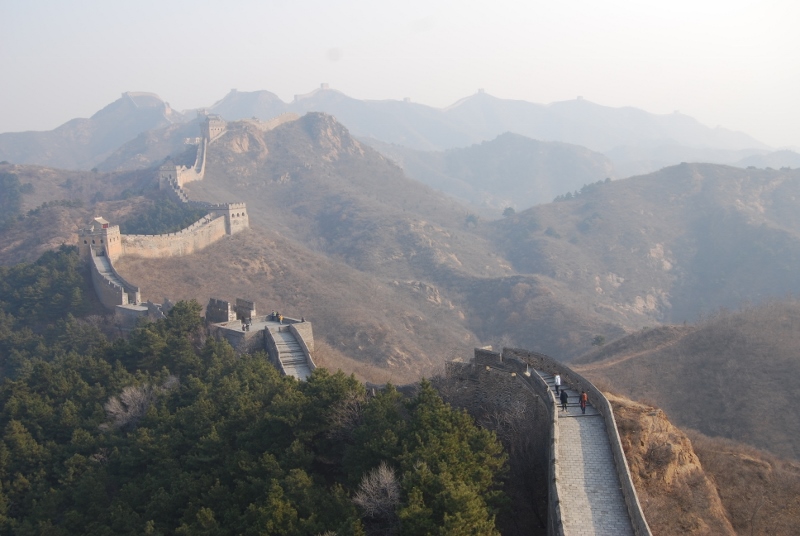I DID not expect to find a copy of China Daily (‘European Weekly’ edition) on sale at a WH Smith at a service station on the M40 in Oxfordshire.
Being just back from China and having become almost bemused by the feverish construction of tower blocks, shopping malls and offices – and also having witnessed the thick, awful smog that hangs over much of the powerhouse nation, thanks to all the booming industry – it seemed like a sign.
The lead story of the paper, which has been published since 2010 in the UK (I was surprised to discover; price £2), was about the growth in Chinese overseas tourism; which partly explained the existence of China Daily at a service station on a road leading to Birmingham and beyond.
It was full of intriguing statistics: only 5 per cent of China’s population of 1.3 billion possesses a passport. The number of Chinese visitors coming to Europe has risen by 21 per cent each year since 2009. More than 150 million travel abroad on holidays each year, up from 83 million in 2012. There has been is a 16-fold rise since 1994.
Russia aside, however, not a single European nation makes the top 15 foreign destinations for the Chinese. A lack of signs and Mandarin and Cantonese-speaking guides is to blame, say tourist officials in Beijing.
Our economies are missing out on a lot: the average annual income of Chinese international travellers is estimated to be US$39,784, compared to the average Chinese income of a paltry US$8,802. It’s also reckoned that the amount spent each day during a holiday is US$1,100, excluding accommodation. The new middle-class likes to shop.
During my recent trip to the Far East, I had become addicted to local newspapers. With a population of more than a billion there’s little shortage of goings on (though as I said in my last blog, censorship keeps much of the wider truth from the masses).
Take one day in November: a man in Henan province has broken the world record for continually spinning (managing 14 hours, and claiming to the reporter that he could read a book while turning circles); an eight-year-old girl from Chongqing had a hairball the size of a new-born baby removed from her stomach (she had, apparently, developed the habit of eating old hair); two students from Yunnan had been “expelled over professed love”; while in Shaanxi a man had poisoned his neighbour’s sheep for eating his pear tree, and a mobile phone thief had swallowed five sewing needles hidden in his collar upon arrest (but lived to tell the tale).
Private Eye‘s Funny Old World column is in no danger of running dry of stories, censorship or not.
These were all in China Daily. Three days later the Shanghai Daily ran pieces on free wi-fi on the metro, a “driver’s licence” for restaurants (“under the initiative, an eatery responsible for a death through food poisoning will lose its entire annual quota of 18 points and will be closed”, while deductions of 12 points were in place for food poisoning affecting “less than ten people”).
Authorities were cracking down on restaurants with an opium habit: “Putting poppy seeds containing morphine into food is illegal but some restaurants and snack bars still add it to their dishes to keep customers coming back for more”. And men in Shangdong province were signing up for “childbirth torture” at a maternity hospital so they could empathise with the pain of childbirth. Electric shocks were fired into abdomen: “It felt like my heart and lungs were being ripped apart,” said one participant.
Meanwhile the Beijing Chaoyang Court People’s Court was reported to have sent down Yang Xiuyu, a “former popular micro-blogger”, for four years for “spreading rumours online”.
Chilling stuff.
The Chinese are coming (and they’re bringing their wallets and world views). If you ever do stop by the Moto Cherwell Valley Service Station on the M40, junction ten, do pick up a copy of the local Chinese rag – it’ll probably pack quite a punch, and help the miles click by.
@tchesshyre
The Great Wall of China:


Comments are closed.